Vietnam’s Hmong people celebrate traditional New Year
Tet – the national New Year celebration of the Vietnamese – is still nearly three weeks away but the Hmong people in Son La, a mountainous province in northwestern Vietnam, have already celebrated their traditional version of this special occasion.
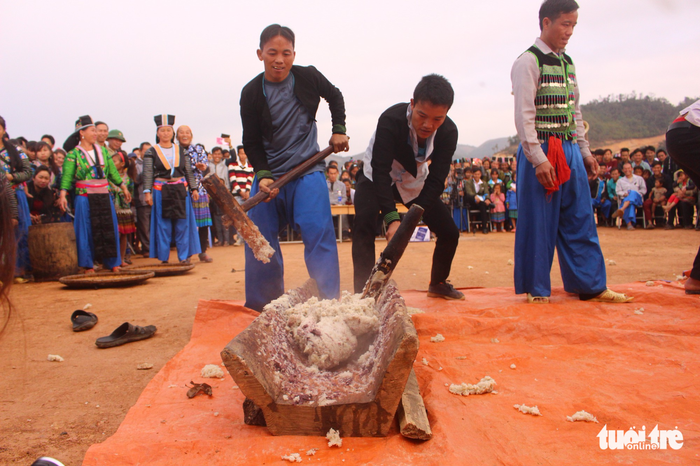
Only men who are considered to be fit and strong are to be chosen to pound banh giay in the competition. Photo: Tuoi Tre
Plum blossoms can be seen covering the hillsides of Son La as people take a break from their farming work, donning colorfully embroidered clothes and enjoying a variety of different activities to celebrate Tet, a way to refer to the Lunar New Year, which begins on February 16.
The Hmong, one of the 54 Vietnamese ethnic groups, welcome the New Year during the first three days of the last lunar calendar month, as opposed to the national Tet, which is held a month later.
For the last four years, four villages in Chieng Lao Commune, Muong La District, Son La have organized a banh giay pounding competition.
Banh giay is a round Vietnamese traditional glutinous rice cake. It is typically used as offerings to ancestors and deities during Tet whilst people pray for a fulfilled and prosperous year to come.
Early in the morning, the men prepare a large mortar and mallets used to pound banh giay, while the women carefully collect the most suitable batch of glutinous rice and cook it until sticky.
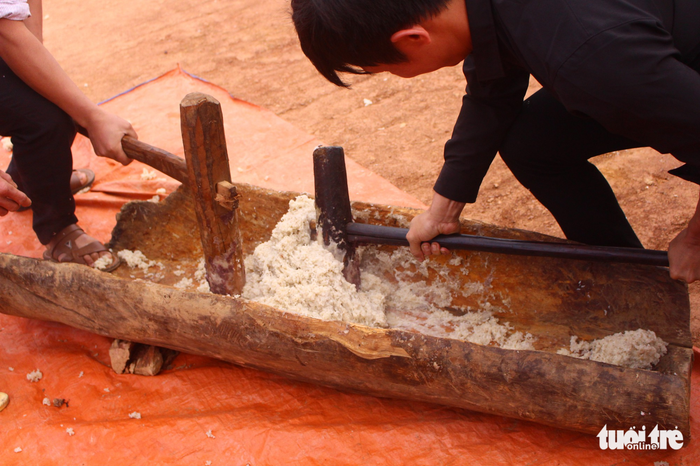
The hot sticky dough is evenly crushed. Photo: Tuoi Tre
The men then put the cooked dough into the large mortar and start pounding. After this has been completed, the women then rub egg yolk on their palms and knead the dough to form a round-shaped cake representing the earth and the sky, as well as prosperity.
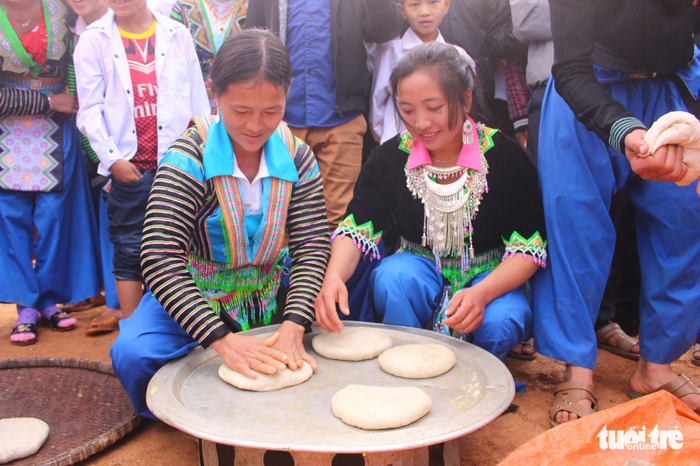
Hmong women shape the dough. Photo: Tuoi Tre
The team who makes the most visually appealing cakes will earn themselves a round of applause from the villagers. However, it can be said that the cakes themselves are rewarding enough.
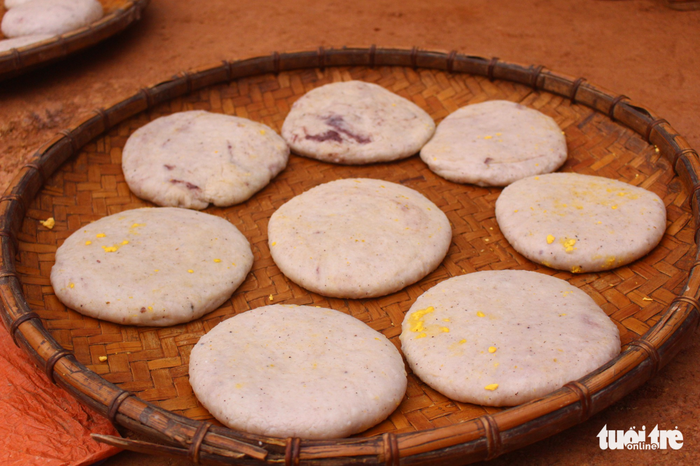
Finished banh giay on display. Photo: Tuoi Tre
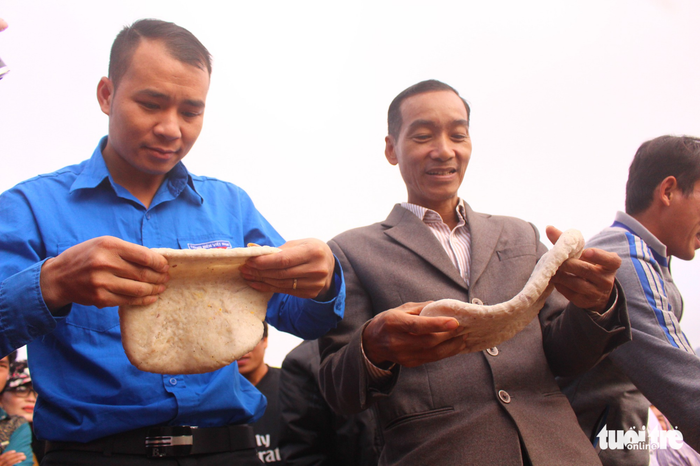
Village officials judge the final products. Photo: Tuoi Tre
“It’s exciting to take several days off and be a part of this annual event. [The Hmong] always celebrate Tet earlier than [the other Vietnamese ethnic groups],” said Mua A Hai, 30, who took part in this year’s competition.
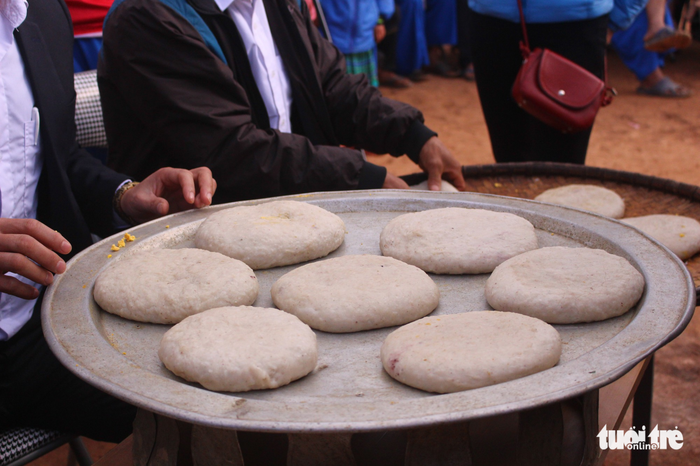
Banh giay is an offering to the deities of the Hmong people. Photo: Tuoi Tre
Bui Thi Dia, resident of Dan En Village, Chieng Lao Commune, enjoys partaking in the traditional games of nem con, saying: “Tet is a wonderful time when we get together to take part in community games and make banh giay. It’s a necessary break from our day-to-day life and a great time to relax with relatives and friends.”
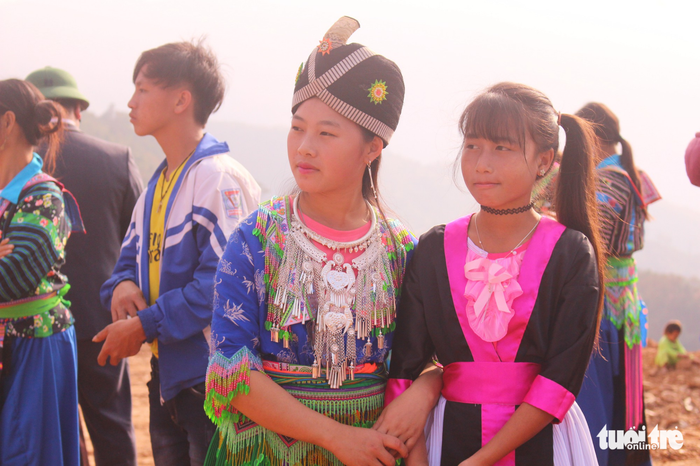
Both male and female visitors wear traditional costumes for this special occasion. Photo: Tuoi Tre
Nem con, like tug-of-war and top spinning, is a traditional Vietnamese game held during New Year celebrations at a communal location.
The game involves tossing a ball through a bamboo ring fixated atop a high-rise bamboo stick to let those on the other side catch it.
The ball, called con, is made up of grain and cotton seeds tucked inside a meticulously sewn layer of fabric.
The grain symbolizes fruitful rice production, whereas cotton seeds symbolize the abundance of cotton crop to come.
The ball tossed from women to the men signifies yin-yang harmony, as well as a means for young people to possibly seek a new date.
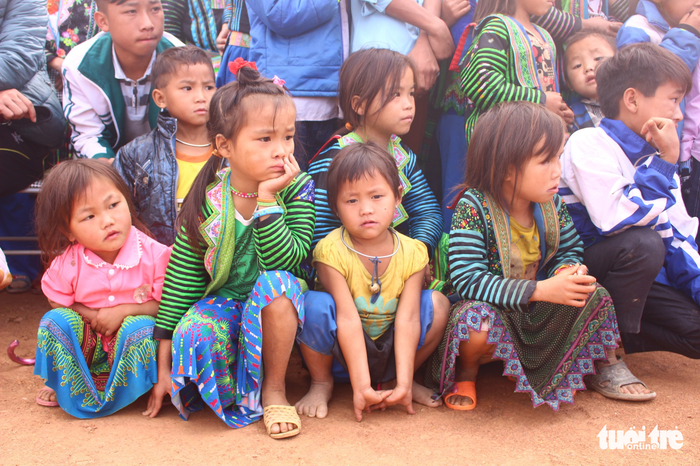
Children join their parents at the festival. Photo: Tuoi Tre
Tet is a significant event to all Vietnamese people, the Hmong included.
Such occasion provides the farmers with a few days of rest and relaxation, whilst allowing them to don their brilliant traditional clothes and enjoy the playful atmosphere of the games.
This important holiday helps to preserve the ethnic Hmong identity and is indispensable belief-wise and culture-wise./.
VNF/TTO
Recommended
 Handbook
Handbook
Vietnam Moves Up 8 Places In World Happiness Index
 Handbook
Handbook
Travelling Vietnam Through French Artist's Children Book
 Multimedia
Multimedia
Vietnamese Turmeric Fish among Best Asian Dishes: TasteAtlas
 Handbook
Handbook
From Lost to Found: German Tourist Thanks Vietnamese Police for Returning His Bag
Popular article
 Handbook
Handbook
Prediction and Resolution for the Disasters of Humanity
 Handbook
Handbook
16 French Films To Be Shown For Free During Tet Holiday In Vietnam
 Handbook
Handbook
Unique Cultural and Religious Activities to Welcome Year of the Snake
 Handbook
Handbook



